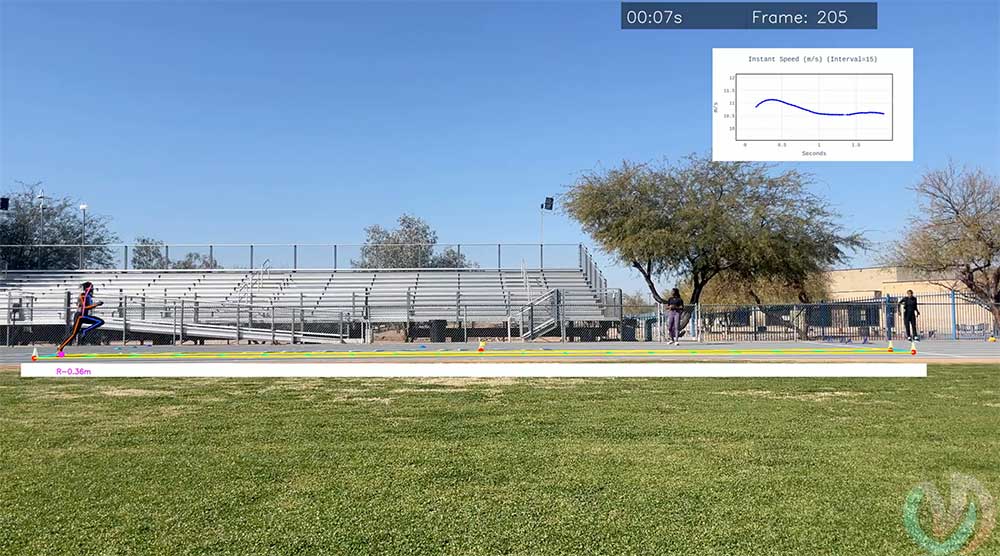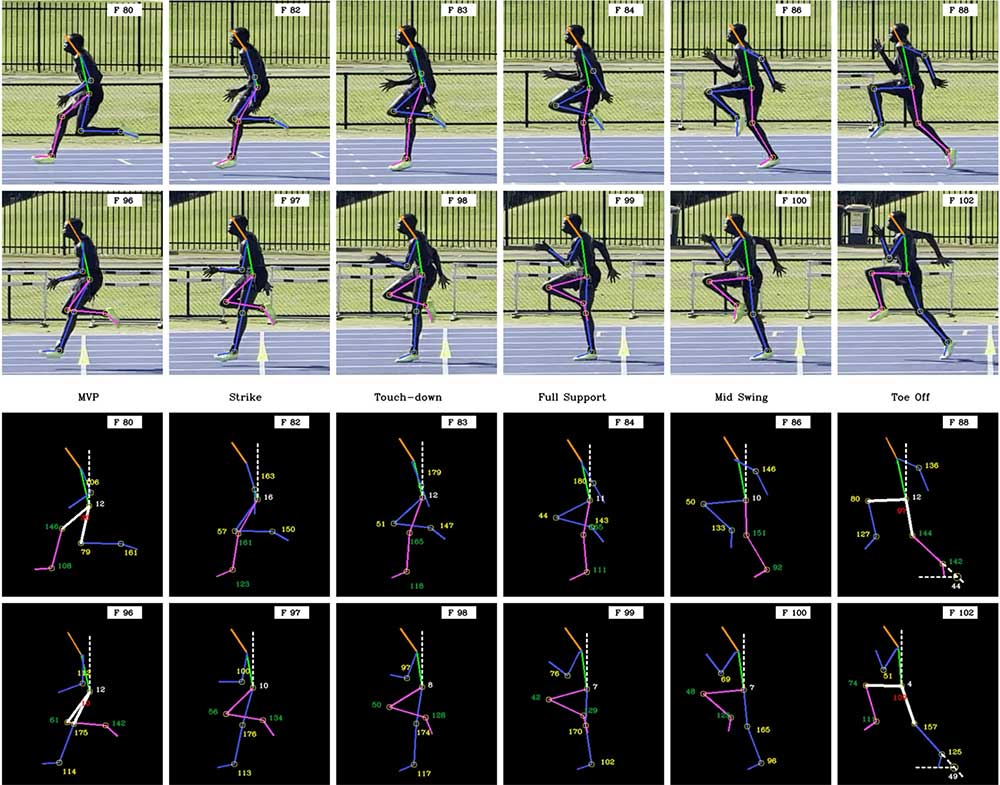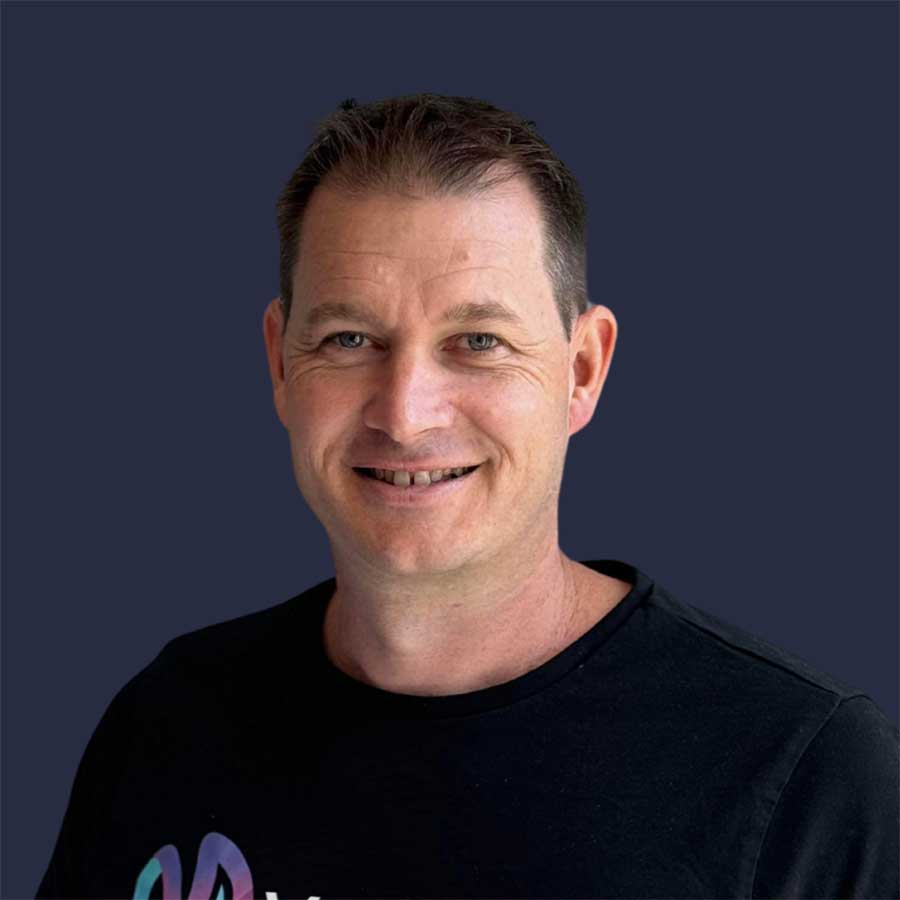VueMotion: Revolutionising athletic performance with AI-driven movement analysis

In five years, VueMotion has made waves both in Australia and globally, working with major professional sporting leagues. With a bold vision to redefine movement analysis in professional sports and beyond, VueMotion is well on its way to setting a global standard.
VueMotions’ first big client, Rugby Australia, used its tools to enhance their existing testing protocols. The success, along with endorsements from key stakeholders in the industry opened doors to global partnerships, including major US sports leagues like the NBA, MLB and NFL.
“The feedback from key players in the industry and professional teams has been overwhelmingly positive. “Having fast access to lab-based measurements in the athletes natural environment is changing how coaching and medical staff are making decisions on player performance and rehabilitation,” said Ryan Talbot, CEO, VueMotion.
VueMotion’s immense success has been supported by its participation in the Australian Sports Technologies Network (ASTN) Pre-Accelerator Program. Through mentorship and connecting the team with key players across the industry, Talbot credits ASTN with helping transform VueMotion’s innovative idea into a thriving business, paving the way for its growth, particularly overseas.
Bridging the gap in movement analysis
VueMotion’s technology does more than just fill a gap in traditional sports testing methods – it redefines what’s possible. Traditional testing often relied on static environments, which fail to replicate how athletes move in the real-world relative to their sport. “Movement testing was historically done statically, vertically or in isolation in gyms, which doesn’t replicate the movement and forces of accelerating or decelerating” added Talbot.
By covering key movement metrics such as acceleration, upright running, deceleration, change of direction, lateral movement, and jumping – VueMotion’s platform deliversdetailed, objective assessments that enable coaches to create precise movement profiles and track interventions with accuracy and ease. The platform’s automated tools also analyse asymmetries, monitor changes over time, and generate detailed reports.
“Our platform combined with specialised tools provide biomechanical insights by mapping joint angles and environmental factors, offering data-driven solutions to optimise performance,” said Talbot.
While sports performance is at VueMotion’s core, Talbot notes that its applications extend into health and wellness. “Movement is critical at every stage of life. We’re exploring applications like walking gait analysis to identify potential health risks and improve life expectancy. For us, it’s about making a difference in people’s lives.”

From a background in biometrics, security and track and field to global business success
Talbot, a pioneer in biometrics in Australia, has spent the past two decades as one of Australia’s leading figures in IT security. His career includes working with the Commonwealth Bank and the NSW Police Force, introducing groundbreaking technologies like Iris Biometrics to Australian banking in 2003.
“My team within the bank rolled out numerous security technologies, which marked the beginning of my deep involvement in biometrics and security systems. When Apple launched the first iPhone in 2007, I was one of the first people to import an iPhone into Australia to explore and develop software technology designed for emergency management,” he added.
One of Talbot’s notable projects involved working as a lead consultant for a major NSW Police Force project, where he was contracted to design advanced camera systems and analytics technologies. “That three-year project allowed me to collaborate with camera and technology providers and innovate in analytics,” said Talbot. “I thrive on taking what is considered impossible and finding ways to make it possible.”
During this time, Talbot met David Klineberg, GM at Canon Oceania. Klineberg eventually convinced Talbot to join Canon to head up the Network Video Solutions team.
“My time at Canon exposed me to cutting-edge analytics, facial recognition, and a range of advanced technologies. These insights laid the groundwork for the innovations we’re driving through VueMotion today.”
From creating kinograms to developing cutting-edge AI
As his career continued to thrive, Talbot was spending his ‘down’ time as a track and field coach. His daughter’s involvement in athletics reignited his passion for the sport. A significant part of his time coaching was spent trying to understand how the athletes moved to improve their performance.
The idea for VueMotion was born in late 2019 when Talbot decided to solve his own problem. Talbot grew increasingly frustrated with spending countless hours manually creating kinograms, which are still images from video used to analyse an athlete’s movements, coordination and ground contact.
Fed up with the inefficiency of the somewhat manual methods, his wife challenged him to find an automated solution, leveraging his extensive career experience in solving complex problems with cutting-edge video technologies. Conversations with his network of coaches also revealed a strong demand for better, faster tools for human movement analysis.
Talbot partnered with his former Canon colleague Dr. Amit Gupta, a computer vision and AI specialist, to develop the VueMotion platform. Together, they recruited David Klineberg, to lead business operations, forming an experienced and dedicated team.
By combining their impressive skills and experience, the team developed technology that could dynamically analyse real-word kinematics. What started as a tool for professional athletes and teams, is now accessible for anyone interested in analysing human movement.
“It’s a game changer. Anyone with a smartphone can use VueMotion. You can setup an iPhone at someone running 20 metres and capture a range of movements to analyse key data points and angles to help identify injury risk and areas for improvement,” said Talbot.
Building a network with ASTN
VueMotion's journey to success has been supported by participation in the ASTN Pre-Accelerator Program (Cohort 3) in 2021. The program exposed Talbot to industry leaders and experienced mentors to help position the business as a trailblazer in the field of performance analytics. Talbot believes this early support has been instrumental in VueMotion’s success.
“Martin Schlegel, Chair of ASTN, was a mentor of mine and really helped shape my thinking early on in the business,” shared Talbot. “The ASTN Pre-Accelerator Program provided invaluable contacts and advice on so many fronts. It’s incredible to have an organisation in Australia that supports startups like ours. ASTN has been instrumental in helping us build a successful business around an idea,” added Talbot.
Talbot also joined ASTN’s US Excursion in 2023. “The US excursion experience was pivotal. It allowed us to build relationships with key players in the US sportstech ecosystem,” he said.
A global leap – establishing a permenant US base
By 2021, VueMotion had already expanded into the US, working with elite sports teams. Talbot, who was based in Sydney, was constantly travelling between the two countries and recognised the need to establish a permanent presence in the US.
In mid-2024, Talbot left Australia headed for a conference in Pittsburg. Following the conference, with two bags in hand, Talbot relocated to Austin, Texas, to further VueMotion’s expansion and bases himself out of The Capital Factory exposing him to a large network of technology companies.
“It was a logical next step. We were already working with many professional teams in the US and setting up a base has allowed us to connect with clients more effectively.”
Being connected with successful like-minded people in the US has helped the rapid expansion of VueMotion. “The US is such a big market and are very forward thinking when it comes to the adoption of the latest technology,” added Talbot.
A vision for the future of movement analysis
Talbot’s five-year vision for VueMotion is bold: to become the global standard for movement analysis across all professional sports and life stages. The company’s ambitious plans include analysing over one million athletes daily.
Beyond sports, VueMotion is driving innovation to make movement analysis accessible to everyone, regardless of age or activity level. Talbot emphasises the importance of understanding how we move and identifying changes that can help reduce injury risks and improve quality of life as we age.
“Movement is vital for everyone at every stage of life,” Talbot said. “It’s a natural progression for VueMotion to expand from sports into the health and wellness industry. By analysing walking gait and range of motion, for instance, we can uncover changes in speed and movement, that may predict life expectancy or detect potential diseases affecting quality of life.”
“We’re committed to making a difference. Technology will continue to evolve, and our goal is to stay ahead, bringing these advancements into the hands of everyday people,” added Talbot.
Advice for other startups
Talbot’s advice for startups is simple, “It’s all about focus. You need to stay focused on the problem or problems you are solving and do it well, as well as find good mentors. Connect others on a similar journey and gain insights from those who have been successful in similar industries, learning from their successes and their mistakes,” said Talbot.
“From day one, we have focused on learning from the best. Whether it’s professional teams, top researchers, or biomechanists. This mindset drives everything we do at VueMotion.”
As VueMotion pushes the boundaries of performance analytics and athlete engagement, it is setting a new standard in sports technology, one innovation at a time.
For more information on VueMotion visit https://www.vuemotion.com/ or https://www.vuemotion.ai
Listen to Ryan Talbot’s interview on Sports Cutting Edge.
